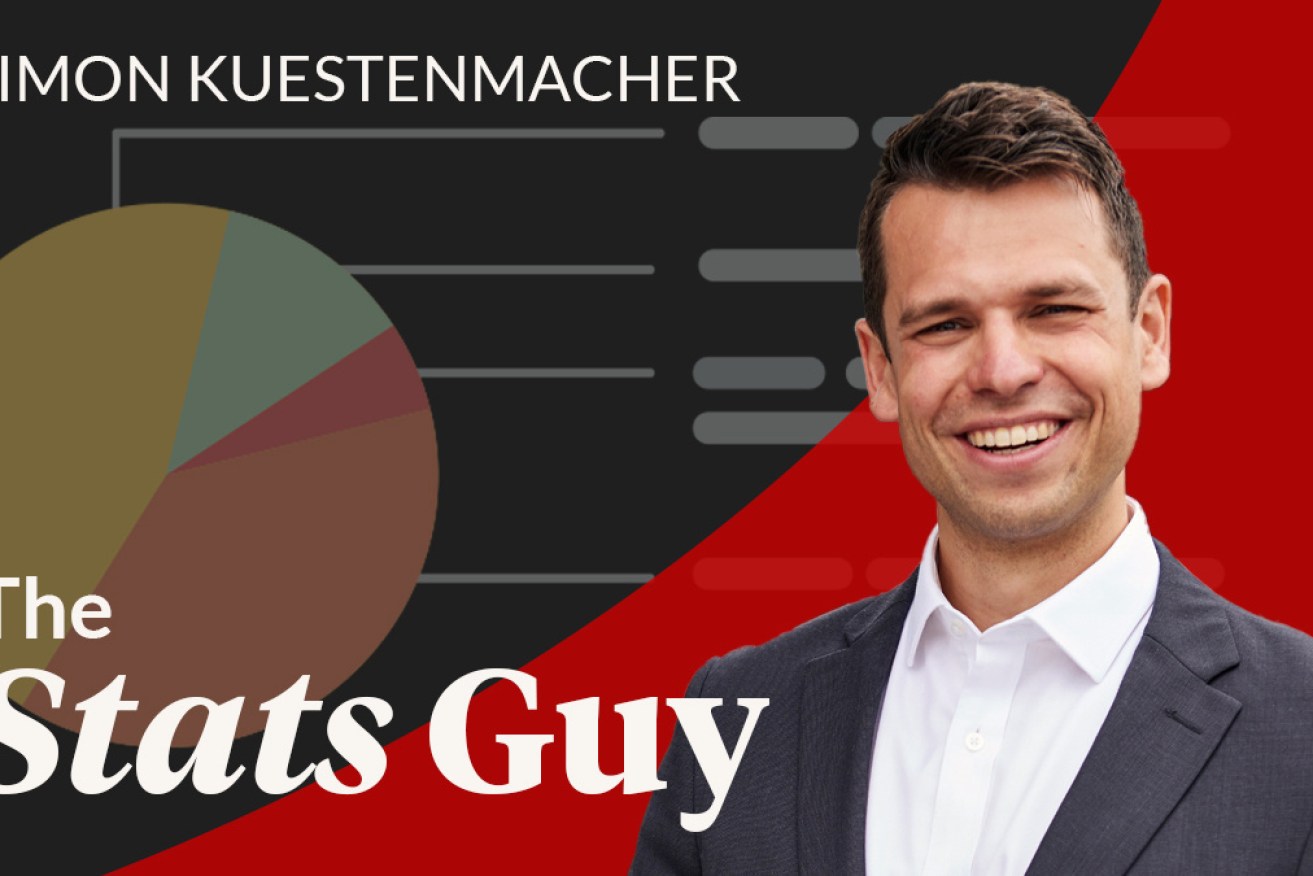The Stats Guy: After COVID, should you still bet on Australia? Here’s the big post-pandemic picture


The next decade will bring challenges, but Australia is in a good position, writes Simon Kuestenmacher.
Let’s put the daily COVID updates to the side for now. It’s easy to lose sight of the bigger picture when you obsess about the next daily case count.
As devastating as lockdowns are, let’s remember that they were extremely effective in keeping us safe. Oceania (we might as well credit New Zealand here too) is the safest place on the planet.
We only recorded 35 COVID-related deaths per one million residents. This compares to over 1500 in North America and Europe (45 times worse than Oceania), or over 2500 in South America (73 times worse).
Another way to measure the impacts of COVID are excess deaths (actual deaths compared to statistically expected deaths). In 2020 Australia experienced 214 excess deaths while the US saw 595,000 more people than statistically likely die. In 2020 you were 46 times more likely to die of COVID in the US than you were in Australia.

We should be proud of how well we have managed the pandemic to date.
Talking down our own achievements will only weaken our position internationally in the future. Which leads me to the question for today’s column.
After COVID should you still bet on Australia?
Demographics soften the economic blow
We were lucky to have the huge millennial generation reach the family formation stage just in time for the lockdowns.
That’s the stage in the lifecycle when you have reached a reasonably high income, bought a house, white goods, and now that you have kids, endless new opportunities to spend money keep emerging.
Having the largest generation in the highest spending phase was just dumb luck, but our demographics helped the economy to tick along reasonably well under terrible circumstances.
We will reap the benefits of our demographics throughout the 2020s. Lucky us.
International students will return
While prices for family-sized homes soared as millennials looked for places to house their new families and Gen X-ers upgraded to bigger homes, prices for inner-city apartments (and especially the subcategory of purpose-built student apartments) fell sharply.
As office workers left their towers behind to work remotely and international students left the country, our inner cities emptied out.
It will take years to reach pre-pandemic levels of office workers in the CBD. But international students will be keen to return to our inner cities.
The demand for English-speaking university degrees only rose during COVID. Knowledge-work jobs increased over the past year-and-a-half while other categories declined.
Studying in the United States looks less appealing for international students (and their parents) after watching years of anti-immigrant tirades.
The appetite for online-only degrees isn’t big in the Asian markets as they understand that the interpersonal component of education will become more crucial in the future.
While the pandemic made plenty of people suffer financially, the people on the top did just fine. Hell, they even benefitted. This just happens to be the cohort that sends their kids to Australia for education.
All this points to international students coming back to Australian inner cities as soon as the borders reopen. I am not alone in thinking this, providers of purpose-built student housing aren’t trying to sell off or repurpose their apartment towers but are busy adding to their housing stock.
International talent will return
Skilled migrants will also come back to Australia as soon as we add jobs to our skilled migration list, which manages incoming migration.
Europe’s ageing population suggests that young workers will be taxed even more in coming years. Australia’s reputation as a lifestyle destination with relatively modest income tax will attract the workers of Europe.
China tightening the screws on Hong Kong and Taiwan suggests that young skilled workers will jump at the first opportunity to leave.
Regions that are less stable or enjoy fewer cultural freedoms (that covers most of the rest of the world) also view Australia favourably.
Australia can control the tap that manages the inflow of migrants. As mentioned at the start of this column, the way we tell the story of our handling of COVID will impact how potential migrants think of Australia as a place to live.
Australia, magnet for capital
How are we being viewed by big international investors? How does a Canadian pension fund or the Norwegian sovereign wealth fund look at us?
An increasing number of their clients are in the retirement stage of the lifecycle, meaning these investors increasingly look for secure investments promising stable returns rather than risky high-growth bets.
The fastest growing economy over the last decade was Ethiopia, big money was made there by infrastructure companies, but it was an extremely risky bet.
Much safer to invest in a rich, politically stable democracy. Better yet if that democracy promises population growth and secure borders. Have a look at the map. I simplified the world for you. Rich countries in blue, poor countries in red.
There are four major fault lines where rich and poor collide, where pressures on the national borders of the rich nations are a political hot potato and where investors are carefully assessing the risks to their investments.
Australia and New Zealand are rich nations with poor neighbours up north. Our borders are much easier to control than in the US or Europe. Europe faces the additional challenges of an ageing demographic, a stagnant population, and massive population growth in neighbouring poorer regions.
Institutional investors won’t withdraw from Europe or the US, but they will want to strengthen their investments outside of these regions.
Infrastructure and property are on the top of the shopping list. Foreign investments are needed as financial tools to fund our infrastructure-driven recovery efforts.
And the next decade?
We won’t of course be facing a decade without challenges. The pandemic-related costs are the most obvious problem.
Then there’s a weakened US, which makes geopolitical shenanigans involving China more likely.
The prospect of more extreme weather events, and a socio-economic divide within Australia are also issues that come to mind.
However, there are stronger trends suggesting that Australia is going to see a prosperous decade despite all these problems.
People and capital are likely to flow back into the country allowing industries and cities to recover.
Hopefully this little view of post-pandemic Australia allowed you to disconnect from daily COVID updates for a few minutes and got you thinking how you and your business might need to prepare for the future.








